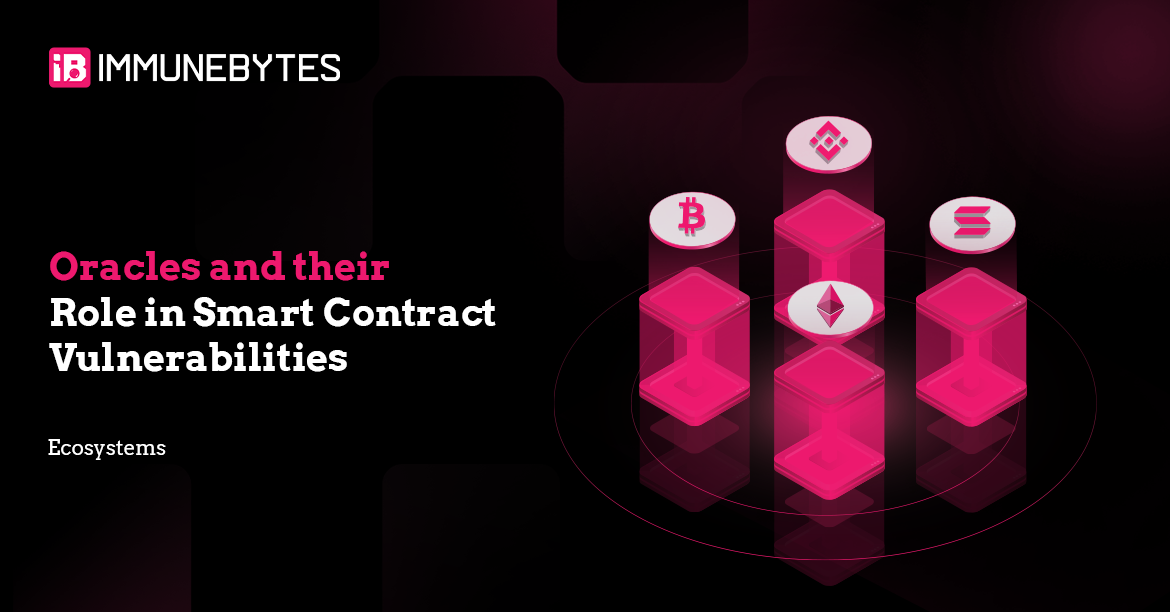Blockchain technology has revolutionized the way we think about finance, creating a trustless ecosystem where decentralized applications (dApps) and smart contracts automate complex financial systems. But even the most sophisticated smart contracts need to interact with the real world, whether fetching the latest cryptocurrency prices or checking the outcome of a sports match. This is where oracles come into play.
Oracles act as bridges between the blockchain and external data sources. While oracles enable incredible functionality, they also introduce serious vulnerabilities that have been exploited time and again.
How Oracles Become a Target
Oracles feed critical information into smart contracts. For example, in decentralized finance (DeFi), lending protocols use oracles to determine asset prices, calculate user collateral, and trigger liquidations. If an oracle provides inaccurate data, even briefly, it can lead to massive financial losses. The trust instilled in these data feeds makes them a prime target for attackers.
Imagine a DeFi protocol using a price oracle that pulls live asset prices from a decentralized exchange (DEX) like Uniswap. If an attacker can manipulate that price feed, they can exploit the system to their advantage. This isn’t merely a theoretical risk—it is a recurring reality with devastating consequences.
The Flash Loan Exploit
One of the most common ways to manipulate oracles is through spot price manipulation. The concept is simple yet catastrophic. Many protocols fetch the “current” price of an asset from a DEX to value deposits or trigger trades. But this price can be temporarily manipulated using flash loans.
Flash loans allow users to borrow large sums of cryptocurrency without collateral, as long as they repay the loan within a single transaction. Attackers exploit this by taking out a flash loan to pump or dump the price of an asset in a liquidity pool, drastically altering its price for a brief moment.
Real-world Example: The Visor Finance Exploit
A perfect example of this is the Visor Finance exploit. The protocol relied on Uniswap for pricing. By draining one side of a Uniswap pool using a flash loan, the attacker spiked the asset’s price, tricking the smart contract into valuing their deposit at an inflated rate. The attacker then withdrew more value than they deposited, drained the pool, and repaid the flash loan, pocketing the difference.
Here, the core issue lies in relying on a single data source for critical decisions. Price feeds that aren’t averaged out or diversified make manipulation cheap and easy.
Off-Chain Failures
Not all oracle vulnerabilities stem from on-chain manipulation. Sometimes, the problem lies off-chain, where the data is initially gathered. Oracles often depend on external servers, APIs, and other traditional systems to collect data before pushing it on-chain. If any part of this process is compromised, the blockchain becomes vulnerable.
Take the Synthetix sKRW incident, for example. Synthetix’s derivatives protocol aggregates prices from various sources. However, due to a malfunction in their off-chain system, the price of the Korean Won (sKRW) was reported 1,000 times higher than its actual value. An arbitrage bot detected and exploited this mispricing, making over $1 billion in profit. Even though the on-chain mechanisms worked as intended, the faulty off-chain data caused catastrophic losses.
This incident highlights the need for rigorous security measures not just on-chain but also in the off-chain infrastructure that supports oracles.
Single Point of Failure
Some projects opt for centralized oracles, where a single entity is responsible for feeding data into the smart contract. While this might seem simpler and more efficient, it introduces a massive trust issue. If the entity managing the oracle becomes malicious or compromised, the entire protocol could collapse.
If the oracle operator realizes they can profit from manipulating the data, they might do so. Secondly, if their private keys are stolen, a hacker could hijack the oracle and wreak havoc on the protocol. Centralized oracles are inherently fragile because they create a single point of failure in otherwise decentralized systems.
The Hidden Threats in Decentralized Oracles
Even decentralized oracles, designed to reduce reliance on single data sources, aren’t immune to manipulation. Participants in decentralized oracle networks are rewarded for submitting data. However, some participants may engage in “freeloading,” copying data from other sources without verifying it, undermining the system’s integrity.
Another subtle yet dangerous attack is mirroring, where a malicious participant feeds data into the system and simultaneously creates multiple fake nodes to echo that data. This tricks the oracle network into believing the data is accurate due to the apparent consensus.
Real-World Exploits of TWAP Oracles
Time-Weighted Average Price (TWAP) oracles were introduced to combat spot price manipulation. Instead of relying on a single price point, TWAP oracles average asset prices over a set period. However, even TWAPs can be exploited if not correctly implemented.
A notable case involved the Venus Protocol on the Binance Smart Chain. The TWAP oracle was vulnerable because it could calculate the average price over a single block if not updated regularly. Attackers exploited this by manipulating prices within one block, tricking the protocol into accepting distorted price data and enabling them to secure unfair loans. This exploit underscores how even sophisticated oracles like TWAPs can be compromised if the update mechanisms are weak.
So, how do you build safer Oracles?
How can we prevent these attacks? Diversification is key. Relying on multiple data sources makes manipulation significantly more expensive and difficult. Using a median price from various oracles rather than a single feed reduces the impact of a faulty or manipulated source.
Time-Weighted Average Prices (TWAP) and Volume-Weighted Average Prices (VWAP) effectively minimize short-term manipulation. However, they need proper configuration, such as enforcing regular updates and ensuring adequate observation windows.
Decentralized oracles like Chainlink, Tellor, and Witnet improve security by distributing data collection across many nodes, making it harder for any single entity to corrupt the data. These systems also introduce economic penalties for malicious behavior, aligning incentives toward accurate data reporting.
Conclusion:
Oracles Are Powerful yet Fragile
Oracles are the backbone of many decentralized applications, enabling smart contracts to interact with the real world. However, they also represent one of the biggest security risks in DeFi. From flash loan-driven price manipulation to off-chain system failures, the attack surface is broad and constantly evolving.
The solution isn’t simple but starts with acknowledging that oracles must be designed with security in mind. Diversifying data sources, using robust averaging mechanisms like TWAP, and adopting decentralized solutions can go a long way in reducing risks.
The blockchain space moves fast, and so do attackers. Strengthening oracle systems today is essential to safeguard the future of decentralized finance.

